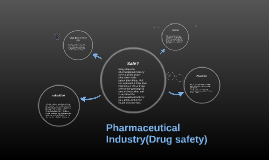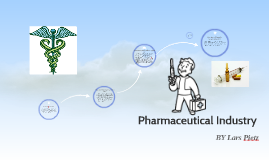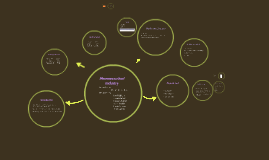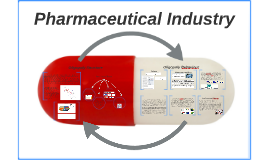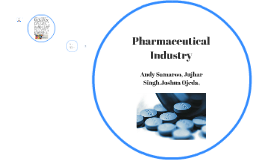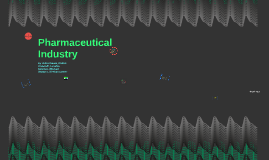Pharmaceutical Industry
Transcript: •Most of the industry revolves around the issue of Calcium and whether or not supplements are needed for the resolution of this epidemic. •http://www.today.com/video/are-vitamins-and-supplements-really-necessary-534938179712 this interview on NBC Today sheds light on just one side of the argument in that anti calcium pills. •http://well.blogs.nytimes.com/2013/04/08/thinking-twice-about-calcium-supplements-2/?_r=0 in this article from the New York Times it states how several studies indicate that the calcium supplements have added to an increased risk of heart attacks and death. •“The one indisputable fact is that the safest and probably the most effective source of calcium for strong bones and overall health is diet, not supplements.” Pharmaceutical Industry Andy Samaroo, Jujhar Singh,Joshua Ojeda, Although the pharmaceutical industry supplies us individuals with medicine for relief and more treatments, there are many cases where the pharmaceutical industry carries out more of a negative factor, than a positive factor. One patient in particular in the year of 2000, was diagnosed with muscle spasms and intense pain over his body, where ironically it was supposed to relief his pain in his back. Also, it can be seen in this article that dangerous antidepressants such as Nefazodone was banned from Canada, because of the toxicity it gave of to the human liver. -On the right is an image of the projected statistics of Vitamin usage in the month of December in 2013. -As it is evident those of the older groups are shown to more likely take vitamins and minerals, this could be because of many reasons. Poor nutrition, lack of exercise, carried over poor genetics, and age are the most common. -Age plays the most significant role along with body preparation in the epidemic of calcium depletion and lack. Pharmacuetical Profits Argument On The Most Popular Issues Of The Industry The pharmacuetical industry generates billions of dollars in profit and it leads many people to the ideology that it is a corrupt buisiness. Many of the cancer setting drugs brings about the most percentage of many about 3.1 billion dollars. But there are also cases in where the buisiness is fined billions based on what medicines are given out. For example, some medicines are given out even though they are illegal. And others are not sold because it was given too strong or too weak for the certain age group. Cons of Pharmacy Pros of the Pharmaceutical Industry The pharmaceutical industry develops, produces, and markets drugs or pharmaceuticals for use as medications. Pharmaceutical companies may deal in generic or brand medications and medical devices. The positive of a pharmaceutical industry is that medicine is being distributed to people with medical cases that can be life threatening, in order to help them get better.The pharmaceutical industry has invested in new drug development, and has major successes. We continue to see new exciting approaches to treatment. In some cases pills are more harmful for the body because people depend on it which can become addictive, which can damage your liver. PhRMA members have invested more than half a trillion dollars in R&D since 2000, including an estimated $51.6 billion in 2013 alone. The jobs the industry creates have high wages and require a workforce with diverse skills and educational levels, from Ph.D. scientists.In 2011, the average annual total compensation for biopharmaceutical workers was $110,490, compared with $54,455 for all U.S. workers. The U.S. pill use sector employs more than 810,000 workers and supports a total of 3.4 million jobs across the country. I got this information from http://www.phrma.org/economic-impact. Importance Of Calcium In The Industry and Our Lives In this video they are basically talking about prices on pills are raising, $230 million is lobbying congress. Martin Shkreli brought Hiv pills and sold it double the money. The pills is $1.50 and he sold it for $30. Companies like pfizer has a fine of $2.3 billion due to this situation. $17.5 billion is marketing $8.2 billion r&d in 2013 There are many health benefits of calcium which the supplements do help in aiding to provide which are sometime overlooked in the debate if the supplements are needed or not. •Helps maintain a healthy body weight. •Reduces risk of colon cancer. •Controls blood pressure. •Reduces risk of kidney stone(s). •Protects cardiac muscle. •Aids in preventing premenstrual depression. •Helps maintain healthy and efficient bones and teeth. •Calcium is one of the leading (drug) supplements on the market today and is a rising mineral that wont seem to cease anytime soon. Statistics On The Epidemic It can be seen that the Pharmaceutical Industry helps the U.S economy prosper in many ways. One way this is illuminated when in particular, the biopharmaceutical company employs more than 810,000 workers every year and a total of 3.4 million jobs across the country alone. Also, it can be analyzed that, when






